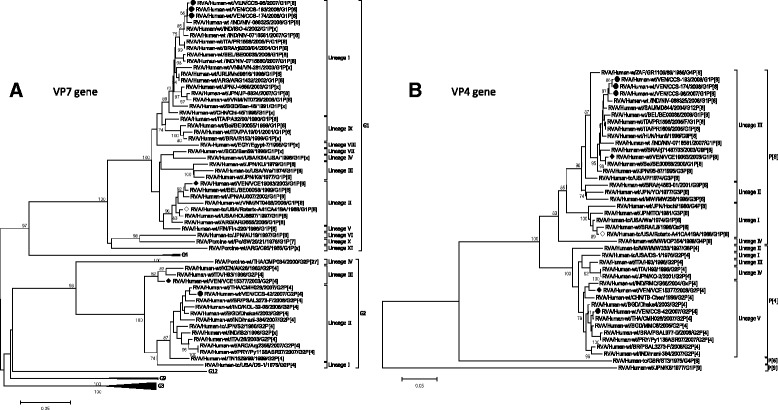Fig. 3.

Phylogenetic analysis based on the partial length nucleotide sequence of the rotavirus VP4 and VP7 genes of Venezuelan strains analyzed. a Phylogenetic tree constructed from VP7 gene partial sequences (more or less 820 nucleotides). b Phylogenetic tree constructed from VP4 gene partial sequences (more or less 890 nucleotides) encoding for the VP8* and part of the VP5* protein subunit. Nucleotide sequences from three G1P[8] and one G2P[4] representative strains of rotavirus circulating in Caracas during 2007-2008 season [marked with a filled circle (●)], were compared with G1P[8] and G2P[4] detected in Valencia (Venezuela) in a previous study [26] accomplished during the 2003 before vaccine introduction [indicated with a filled diamond (♦)], Rotarix®-A41CA419A vaccine strain commercially available [marked with an empty diamond (◊)] and reference rotavirus strains from GenBank database. Rotavirus nomenclature has been used according to the Rotavirus Classification Working Group [68]. For each strain (where available) host species, country of origin, year of isolation and genotypes G-P are shown. The trees were constructed using the neighbor joining method and Kimura’s 2-parameter model. Only bootstrap values above 70%, estimated with 1000 pseudoreplicate data sets, are indicated at each node. Bar is in units of base substitutions per site. The nucleotide sequence data reported in this work were submitted to GenBank with accession numbers KY039372-KY039373 and KY053848-KY053851 for VP7 gene, and KY056539-KY056544 for VP4 gene
